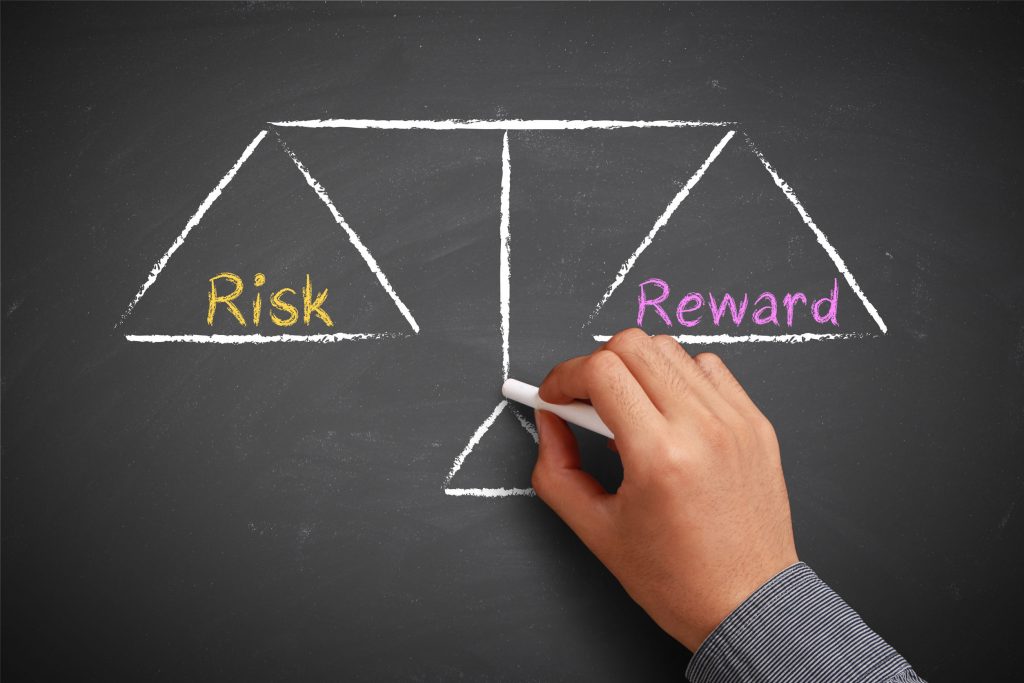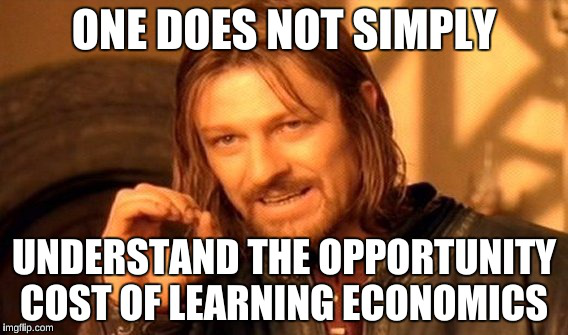Today’s guest post from regular contributor, Justin Kompf, discusses a phenomenon everyone deals with on a daily basis: opportunity costs.
For example, the opportunity cost of me posting pictures of my cat in different outfits everyday is that I don’t get invited to public gatherings all too often.1
In the health & fitness realm we battle opportunity costs all the time. It drives why we may hit up the pizza buffet rather than make an omelet, or why we’d choose to go exercise over going out drinking with our friends. Opportunity costs very much play a role in our ability to make healthy decisions and differ person to person.
I hope today’s post helps shed some light on a very important and relevant topic.

In college, I had a roommate who would tag along with me to the grocery store. He had this habit of always performing the mental arithmetic to determine how much chicken he could get for the price of any one item.
“Hmm this bacon is $6.00 but I could get 2.5 pounds of chicken for the same price.”
“Well, I like steak but I could get double the amount of chicken for this.”
What my friend didn’t know was that he was demonstrating, nearly perfectly, an economic principle called opportunity cost. The text-book term for opportunity cost is “the unrealized flow of utility from the alternatives a choice displaces” (Frederick, Novemsky, Wang, Dhar, & Nowlis, 2009).

To a money saving 21-year-old, opportunity cost begs the question; is 2 pounds of chicken plus an extra four dollars more valuable than eating steak?
Opportunity-cost dictates that anytime we make a decision between several choices we give up the benefits of the alternative choices.
People do not implicitly think about opportunity-cost when making purchasing decisions (Frederick et al., 2009) and I would argue that they fail to as well with health decisions. Further, most people limit themselves in their decision-making process to usually one of two choices (do this or that, pick this or that).
Identifying the opportunity cost of healthy decisions in a similar way to economic decisions may prove beneficial. In order to do this, one would simply replace a dollar amount with a caloric amount or replace lost time amounts that could be used on activities other than exercise (i.e. family time vs gym time).
Opportunity Cost Application to Health Decisions
It would be useful to identify opportunity cost to help resolve ambivalence in the healthy decision making process. Competing demands often do exist between a person’s desires to be physically active and to be sedentary (Smith & Biddle, 1999).
Similarly, anyone that has attempted to lose weight likely understands the competing demands between the desire to be lean and the desire to eat tempting food.
Taking part in one of these pursuits inherently means foregoing the other (i.e. you cannot be sedentary and exercising at the same time) and therefore not realizing the benefits that each activity provides.
Opportunity-Cost Scenario 1
Take for example, one scenario where an individual has strong beliefs that if they exercise their fitness can improve; thus, reducing the risk for cardiac disease. They also hold a competing belief that if they exercise time will be taken away from their family (Godin, 1993).
Perceived cost: lost health benefits vs lost time with family.
Perceived opportunity: improved health vs more time with family.
Opportunity-Cost Scenario 2
In another example, if a person has the option between a fast food dinner and a home cooked meal they must decide between the hedonic pleasure and convenience of the fast food meal and the health benefits of eating the home cooked meal.
Perceived cost: high calorie foods can lead to weight gain vs loss of pleasure and time.
Perceived opportunity: improved health vs pleasure and more time.
Reframing Choices and Resolving Ambivalence
In scenario 1 it is perceived that time can only be spent exercising OR with family. Pursing one choice will remove the benefits of the other.
Many people examine the decision-making process as the choice between one of two options (Heath & Heath). However, this is rarely ever the instance in any decision.
In the case of the potential exerciser, the opportunity-cost may seem relatively salient (this is likely different in food choice as most people do not naturally consider opportunity cost, Frederick et al., 2009) yet they remain indecisive.
The individual in this situation is likely feeling ambivalent about the decision process. They want to exercise, but at the same time they don’t want to exercise because of the cost.
This person may be falling into a decision-making mistake called the ‘limited search trap’. In scenario one the best solution would be to help this person ‘widen’ their options (Nutt, 2004).
Rather than limit the decision-making process to two options this person should think of other ways they could be active without losing out on family time. Some of these options might include:
Option 1: Exercise with the family by recruiting family members to go for walks after dinner to discuss the day.
Option 2: Exercise for 30 minutes during a lunch break. This time would not be spent with the family anyways so this time is not being taken away from the family.
Option 3: Evaluate how other time is spent. Perhaps this person spends an hour of time before they go to bed watching TV. They can cut their TV time down to 30 minutes and replace the other 30 minutes with 20 minutes of cycling, walking or running and the remaining 10 to shower.
In scenario 2 an individual is faced with the decision of eating a fast food meal or a home cooked dinner. This would be an appropriate scenario to help increase the salience of opportunity-cost to aid the decision-making process.
This person might compare the calories (1,050 vs 550), they might judge what would taste better based on the mood they are in, or they may factor in time constraints. But they don’t see that they could (1) double the healthy meal and still have nearly the same number of calories or (2) save those extra calories for something else such a 300-calorie popcorn during the movies (still 200 calories less).
They were already willing to ‘spend’ 1,050 calories. By utilizing this opportunity-cost strategy they may be able to more readily observe what other foods or ways that they could ‘spend’ their calories on.
Conclusions
If a person is struggling with making the best possible decisions for their health and well-being they may benefit from a thorough examination of the opportunity-cost of their behavior.
In other cases, opportunity-cost may seem explicit, as in the case of the exerciser but only when trapped in limited searching.
For ambivalent individuals who seem to have clear opportunity-cost increasing the number of available options can help in the decision-making process.
About the Author
Justin is a doctoral student at the University of Massachusetts Boston where he is studying health and exercise sciences. Justin writes at www.Justinmkompf.com.
References
Godin G. Theories of reasoned action and planned behavior: usefulness for exercise promotion. Medicine & Science in Sports & Exercise 26(11), 1391-1394, 1994.
Frederick S, Novemsky N, Wang J, Dhar R, Nowlis S. Opportunity cost neglect. Journal of Consumer Research. 36(4): 553-561, 2009.
Nutt PC. Expanding the search for alternatives during strategic decision-making. Academy of Managment Executive 18(4), 13-27.
Smith AR, Biddle SJ. Attitudes and exercise adherence: Test of the theories of reasoned action and planned behavior. Journal of Sports Sciences 17: 269-281, 1999.


